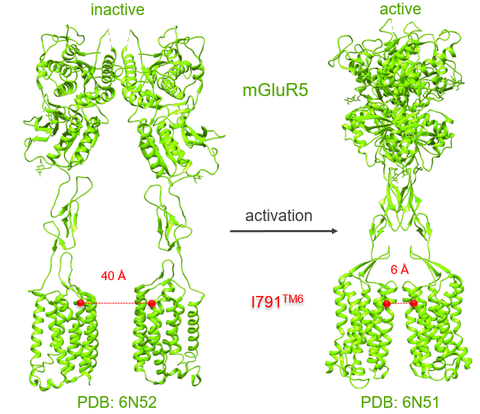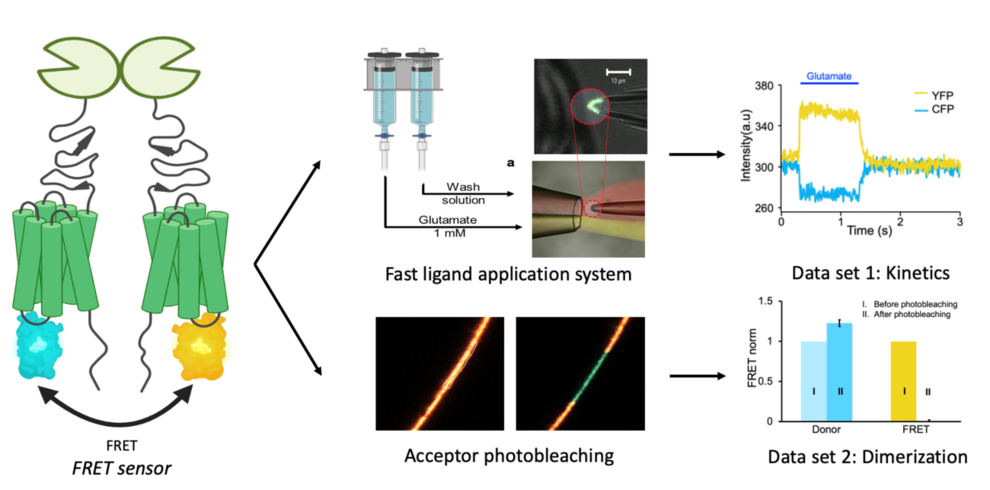Class C GPCRs: Metabotropic Glutamate Receptors, dimerization, and conformational dynamics
G-protein coupled receptors are the largest family of protein receptors in cell membranes, furthermore, they represent a very important group of drug targets (Krishna Sriram and Paul A. Insel, 2018). Metabotropic glutamate receptors belong to Class C of GPCRs, they are activated by glutamate, a major excitatory neurotransmitter in the brain. mGluRs are widely expressed in the CNS and play a significant role in synaptic plasticity, memory, and learning (Pin JP, Duvoisin R. (1995). They are being studied as possible drug targets for treating neurodegenerative disorders (Akito Yasuhara and Shigeyuki Chacki, 2010).
Structurally mGluRs differ from other classes of GPCRs, by forming dimers instead of monomers (Nisweder et al. 2012). The ligand-binding domain is located in the extracellular site that is followed by a long cysteine-rich domain that ends in the transmembrane region (Nisweder et al. 2010).



